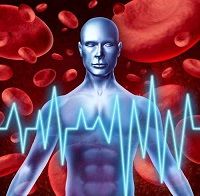Article
Mobile Stroke Treatment Unit Launches in New York City
Author(s):
Three New York City area medical centers teamed up with the FDNY to launch the Mobile Stroke Treatment Unit (MSTU), an emergency transport vehicle specifically fitted to answer to patients who experiencing symptoms of strokes.

Three New York City area medical centers teamed up with the FDNY to launch the Mobile Stroke Treatment Unit (MSTU), an emergency transport vehicle specifically fitted to answer to patients who experiencing symptoms of strokes.
“The Mobile Stroke Treatment Unit delivers the most advanced technologies, expert staff and life saving treatment to more stroke victims in need,” Dr. Steven J. Corwin, president and CEO of New York-Presbyterian, one of the area hospitals involved in the project alongside Weill Cornell Medicine and Columbia University medical Center, said in a press release. “We are very proud to be the only hospital on the East Coast to provide these services. This is a remarkable achievement as we move forward in revolutionizing stroke care.”
The ambulance can be dispatched to the scene of the incident through a specialized algorithm in the city’s 9-1-1 emergency system. The vehicle will host two paramedics, a CT technologist and a neurologist on board in addition to relevant, specialized equipment and medications specifically for diagnosing and treating strokes. It also has wifi and mobile capabilities, allowing for images to be transmitted from the ambulance to the hospital prior to the patient’s arrival.
“When a stroke occurs, with every minute that passes before we treat, we lose 1.9 million brain cells,” Matthew Fink, MD, Chairman of the Department Neurology at New York-Presbyterian, explained in a YouTube video. Also in the video, spokespeople explain that this vehicle will essentially bring the emergency room out into the field and to the patient faster. It’s estimated that the MSTU will save up to 25 minutes of treatment time per patient.
“This new unit will work closely with FDNY Paramedics, EMTs and Firefighters on some of the most serious medical calls the Department responds to, increasing the level of pre-hospital care our patients receive, preventing further long-term effects due to patients who have suffered a stroke, and potentially saving many more lives,” continued Fire Commissioner Daniel A. Nigro.
After transport in the MTSU, the team will conduct follow ups to gather information, such as patient outcomes after 90 days, the percentage of patients treated on the MTSU who made full recoveries compared to standard ambulance care, and overall cost of care. Researchers then plan to collaborate with similar units through the United States for a bigger analysis on best treatment practices for emergency stroke care.
Related Coverage:
More Can Be Done for Patients Who Had Minor Strokes
Strong Social Circles Shorten Stays in Stroke Rehab Facilities
NOAC Showdown: Apixaban Comes Out on Top in MAYO Clinic Study


